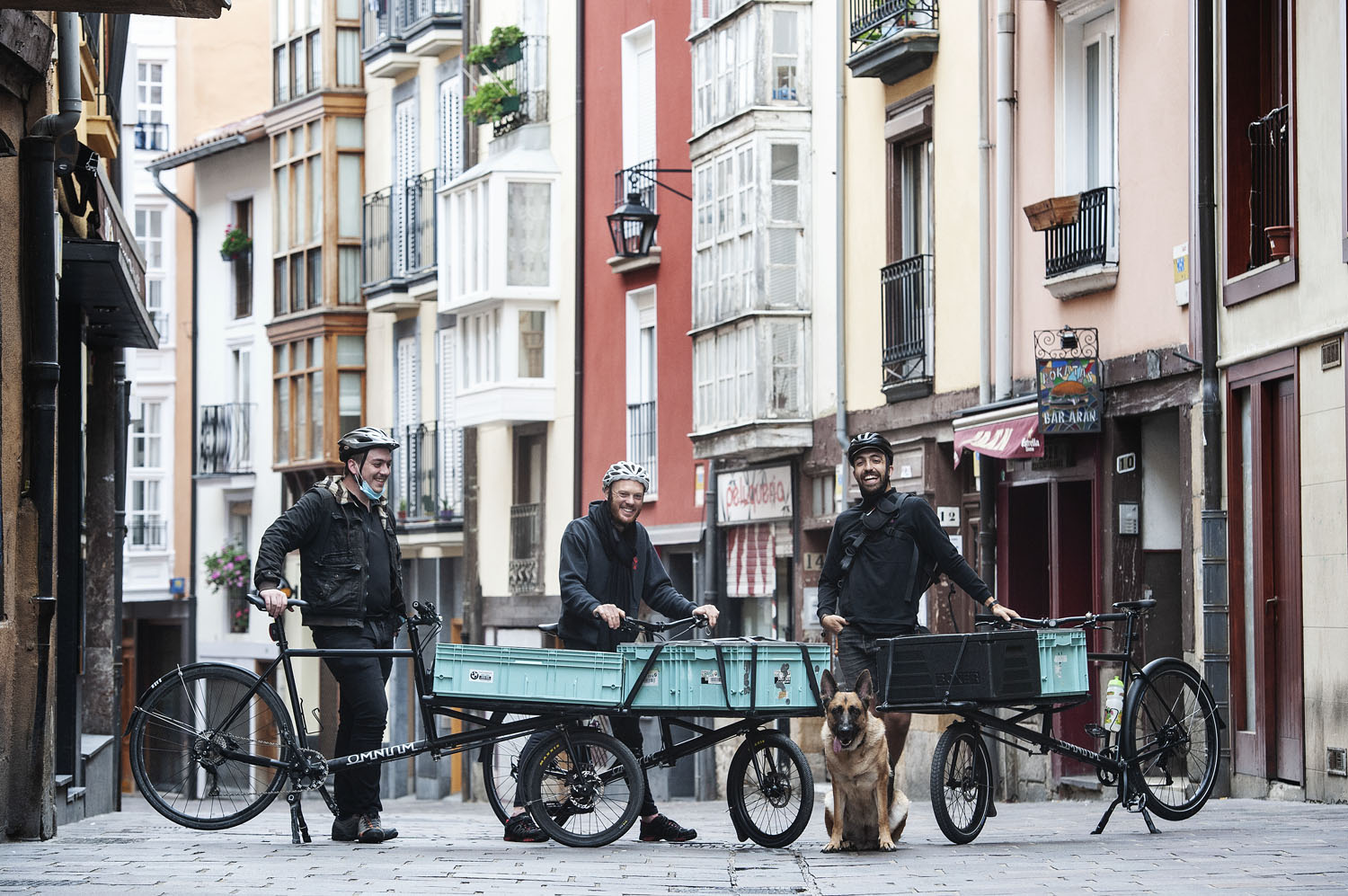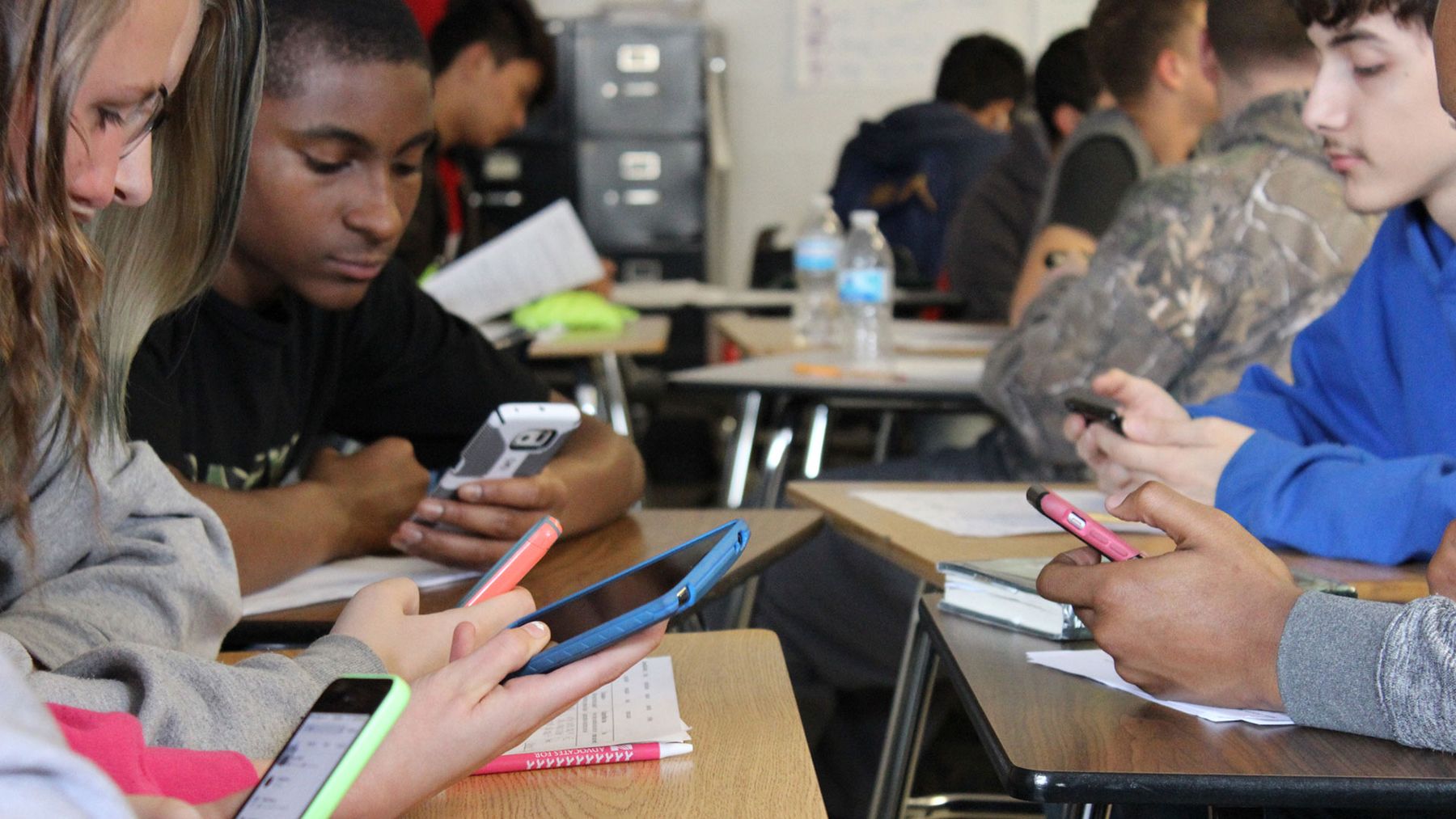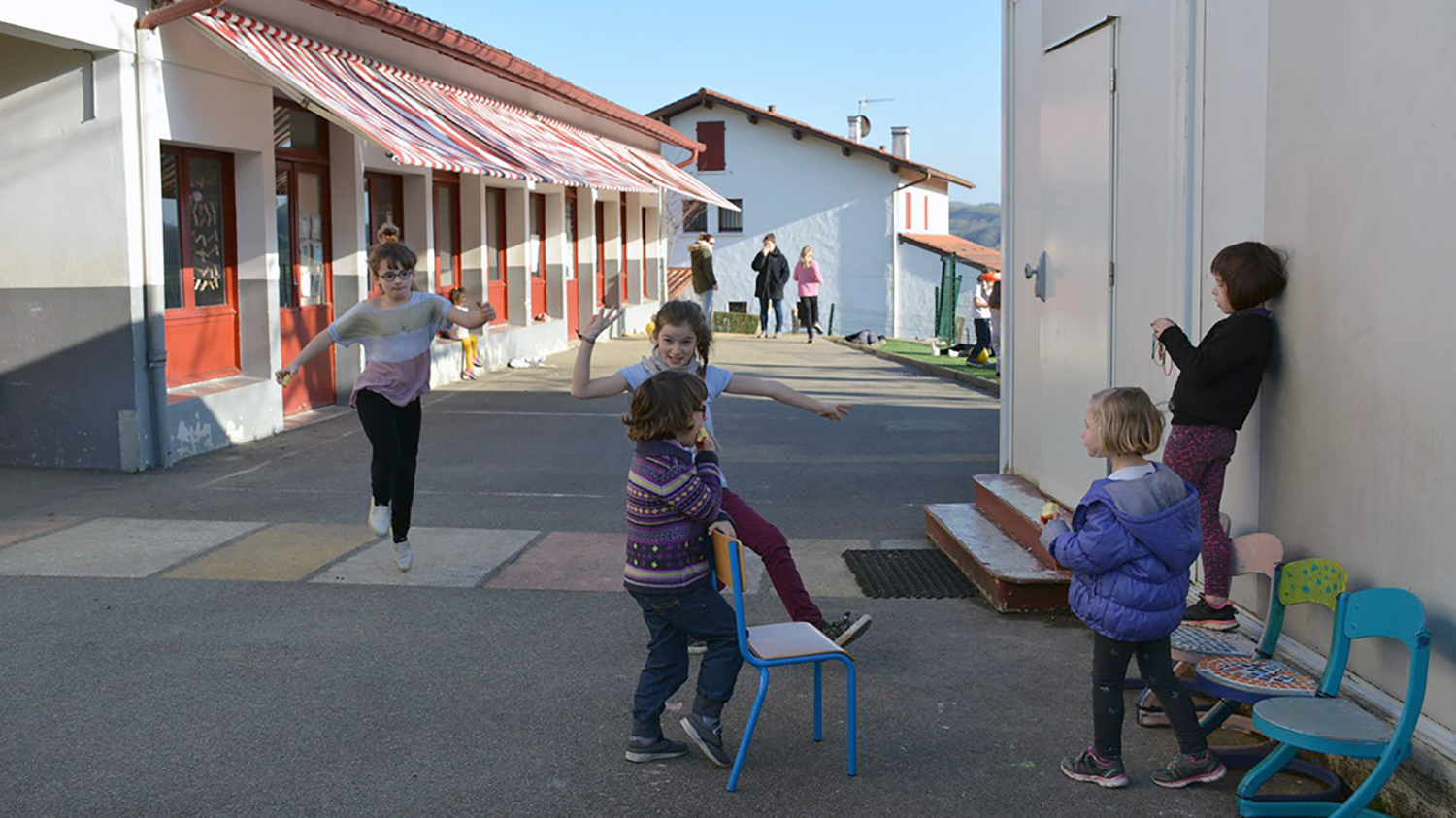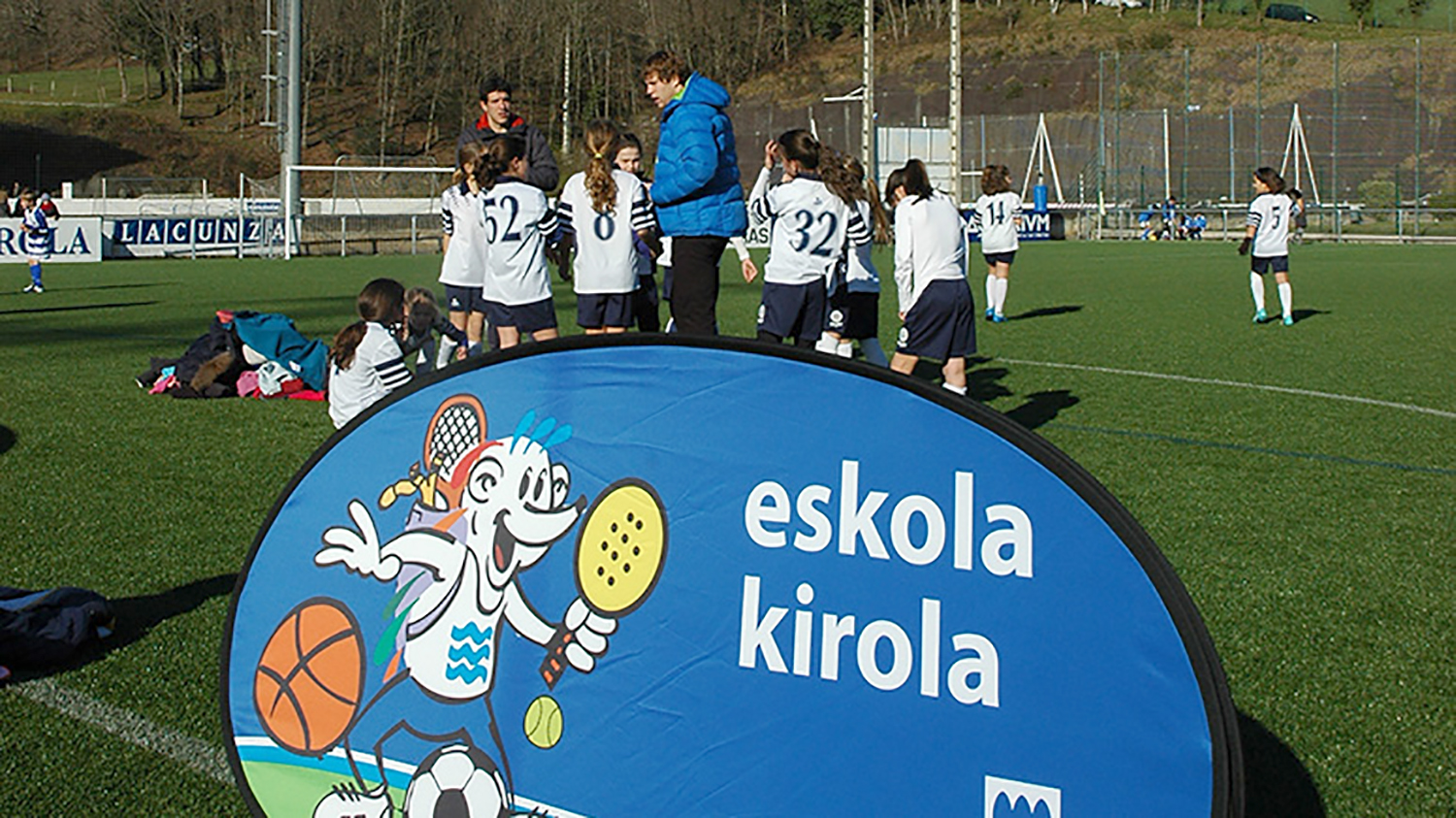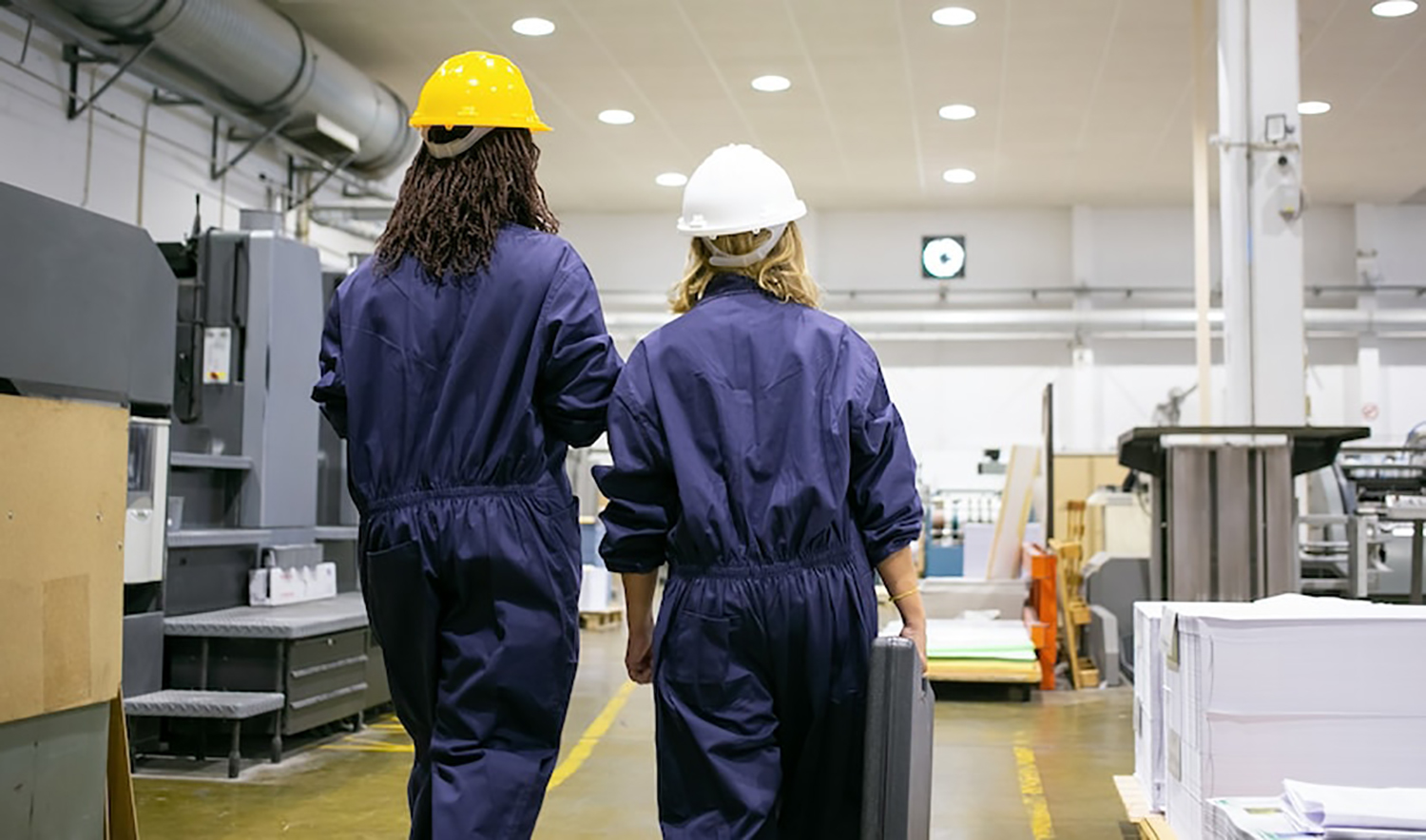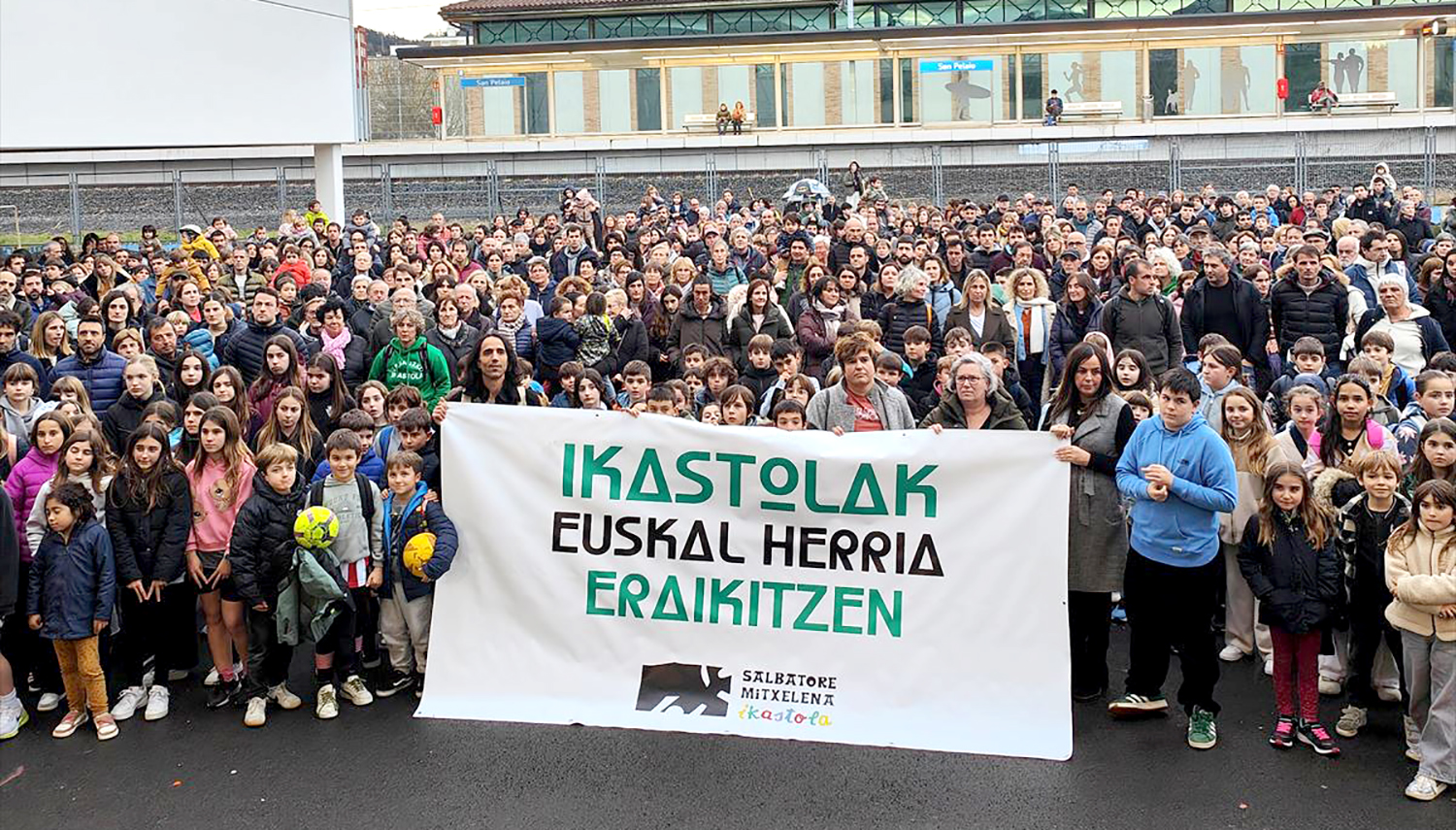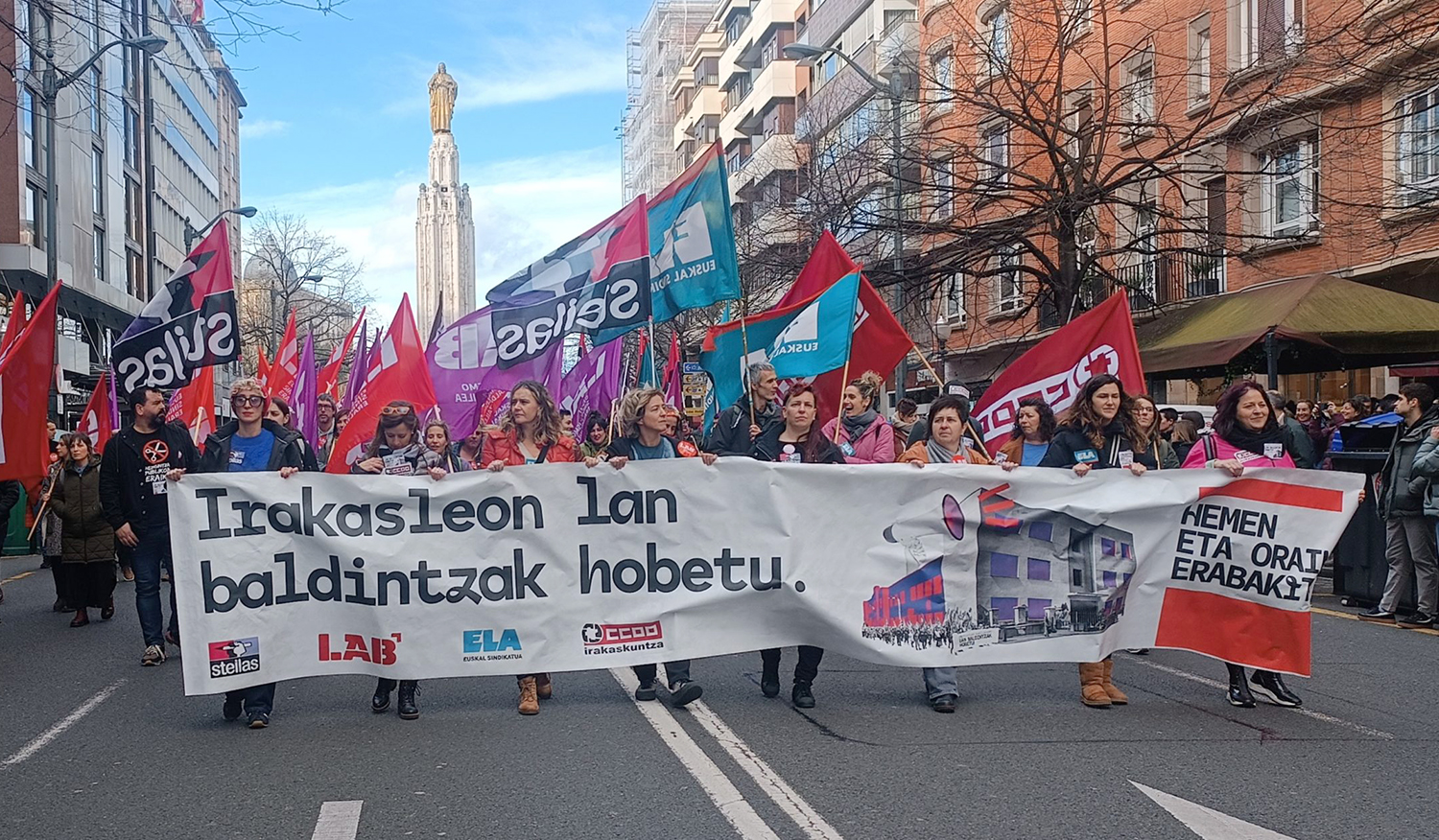Objective of adaptation to the needs of the student
- Laudio Ikastola, organizer of this year’s Araba Euskaraz festival, has launched a resource that aims to promote the integration of all children: The Stable Room. It is a means of helping those with special and urgent needs in their studies.
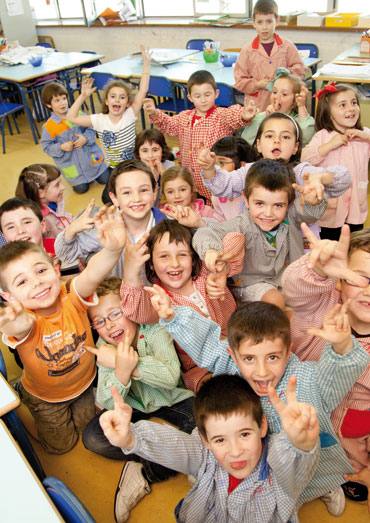
The Stable Classroom is a space dedicated to students with special and urgent educational needs. They have it in public schools, but Laudio is the first school to implement this type of initiative. The Stable Room welcomes children who, despite the use of adapted means, cannot keep up with the usual classroom. “So far they have worked in the traditional classroom, but over the years we have seen that the needs they have are not satisfied with the possibilities they have in it,” say Leire Burdain and Zuriñe García, responsible for the Stable Classroom.
There are no subjects on this site like in traditional classrooms. On the one hand, they address areas such as autonomy and communication skills. “They’re playing and acting in class.” On the other hand, they work on learning skills, topics that are usually dealt with in other classrooms. They are very dynamic schools and the structure of the room and the location of things depends on their needs. The gel only has what they need, because with too many things there is a risk of losing concentration.
Zuriñe García tells us that he spends several hours preparing the material: “We make the material ourselves and that’s the hardest part. Since it is necessary to respond to the needs of each one, we must make personalized and adapted material. For students with comprehension problems, we explain the subjects we work with through photographs and pictograms.” They say it’s a lot of work ahead of time because, as beginners, there is no specific material that has been created before. As they can, they deal with issues according to the ability of the students with the molded material. In addition, they say that, being a year of creation, they have had ups and downs because the teachers have to understand the scope of the project and have to show that the Stable Classroom is the most appropriate resource that these children can have.
In each Stable Room there can be a maximum of five children and there are children of different levels in the same room, but the tasks they perform are individual, some are the same and some are not. They currently have three students: Oier Azcaray (8 years old), Jon Camacho (10 years old) and an 11-year-old girl. These students spend most of their time in the Stable Classroom, but they also stay in the other classrooms to maintain contact with the rest of the students. The circumstances of each child determine the amount of time he or she can spend in one or the other. “We have a student with cerebral palsy, he can’t follow the classes at the pace of others, but in order for him to have contact with the rest of the students, he goes to the other classrooms. The case of the others is different, they can follow mathematics, literacy, music, plastic and this type of lessons when they join the students of the traditional classrooms, so it is also an academic objective to leave the Stable Classroom”, explains Burdain. Everyone always spends several hours of the day with the other members, moving the three students to the regular classroom or, conversely, taking the rest of the children to the Stable Classroom. As a result, the students did not notice a significant change from the previous years when they were all together.
All with everyone
When students go to the regular classroom, they often have personalized assignments, each similar to their own and that of others, but the teachers emphasize the importance of having contact with the children of the other classrooms. As a first year, there is still a bit more experience to be had, but as Burdain says, “we want to do different initiatives so that everyone can have contact with everyone. The students of the Stable Classroom also belong to the school, they have the need and the right to be with other members, and we want to reflect that.”
The attitude of children in the traditional classroom has also been positive, students with special needs have always been well taken care of and experience this year’s change in a natural way. “It is very gratifying for us to see our classmates in the regular classroom explain things to the child. This allows us to do many things. Being in the same room with the rest is very important, the acceptance of the members is seen there”, they say.
As in all the schools, those who do not reach the rhythm of the traditional classrooms also have a support room in Laudio, where until now, those with urgent needs have been. However, the Stable Room is more special than the support room and does not extend by centers, but by regions. The PT or specialist to help those with special needs (Olaia Hormaetxe) and the educator (Cristina Aguado) are present, but the specialist moves from one class to another depending on the number of students. When the three students are in class, for example, there are usually teachers and specialists.
Two years ago they started the process of setting up the Stable Room in Laudio, but earlier they made other attempts because they have children in the school who need special resources for several years. In agreement with the renewal date and the parents, they decided to move forward. They have psycho-pedagogical advice in Renovation Days, which is responsible for carrying out the diagnostic assessment of students with special educational needs, advising the school and the guidance team, as well as providing resources. For its part, the Department of Education of the Basque Government analyzes the needs and is responsible for the implementation of the Stable Classroom. “In our case, for example, a student here had to leave the school two years ago because he needed this resource and we didn’t have a Stable Classroom,” says Garcia.
Collaboration of teachers
Burdain emphasizes that the collaboration between teachers has been very positive and that the colleagues have clearly seen from the beginning the need for the initiative launched. They feel that it is another room that can accommodate more students in the diversity and as a result they see many optimistic differences: “Before it was a race full of obstacles, we didn’t get to meet their needs and in the end things didn’t go as they should or as we wanted. It was harder to coordinate things,” says Garcia. Now there is a person in charge of this, a person who has time to take the matter seriously. According to the person in charge, “I am very relieved to see that the students are progressing gradually and that they are given what they need.” They say that they are responding to their needs and that they have many resources and offers to deal with them, that is, they are now working on things more deeply. In addition, a support classroom teacher also teaches in the Stable Classroom and Garcia, for her part, teaches in the support classroom for a few days, a dynamic that has been considered enriching and appropriate for children.
No other children are expected to need the Stable Classroom for the next school year. But they know that there will be a need in the region in a few years. For this reason, these first steps will be important to continue improving and responding to the demand that arises in the future from hard work and experience.
Jon Camachoren ama da Rosa Roberto, eta bere iritzia eman digu: “Nire semearentzako baliabide egokiena dela argi daukat. Beste gelekin konparatuta, haur bakoitzak zuzeneko tratua du, pertsonalizatua, eta egokia iruditzen zait. Gainera, momentu oro gertatzen denaz informatzen gaituzte, aholkatzen didaten pertsonak ditut, eta horrela gero etxean ikastolan landutako hori indartzeko aukera izaten dugu. Nire semea beste Gela Egonkor batean egon zen eta egia esan nahiko antzekoak dira biak. Esperientzia oso onuragarria da, eta oso polita, azkenean Jon hobeto ezagutzeko aukera ematen didalako”.
9:00: Ordutegia osatzen dute egunean zehar egingo dutena zehaztu eta haurrek argi izan dezaten.
9:15: Ikasle zerrenda errepasatzen dute.
9:30: Ordua eta eguraldia zein diren ikusten dute.
10:00: Ipuinen bidez bakoitzak dagokion gaia lantzen du.
10:30: Bakarkako lanak eta hirurek batera egin beharreko ariketak uztartzen dituzte. Bakarrik egiteko direnak banakako txokoan egiten dituzte.
11:00: Komunera eta jolastokira joaten dira.
11:30: Jolas txokora joaten dira, jostatzera.
12:00: Jantokian jango dutena galdetzen zaie.
14:30: Bazkaltzetik itzultzean, dinamismoa oinarri duten eskolak nagusitzen dira.
15:30: Ohiko ikasgeletara joaten dira, gainerako haurrekin egotera.
I received your e-mail in personal mail on the strike portals. At first, like many others, I thought it was to let you know what options we have in the face of the strike. But no, the e-mail received was a political and communicative movement against the strike.
I will confess... [+]
And for another year, the unions have organized prefabricated strikes for us. And we, individually, will decide whether or not to join the strike, without the need for any assembly at the school.
The strike model that I was taught is no longer in vogue, it seems. In my... [+]
Behin batean, gazterik, gidoi nagusia betetzea egokitu zitzaion. Elbira Zipitriaren ikasle izanak, ikastolen mugimendu berriarekin bat egin zuen. Irakasle izan zen artisau baino lehen. Gero, eskulturgile. Egun, musika jotzen du, bere gogoz eta bere buruarentzat. Eta beti, eta 35... [+]









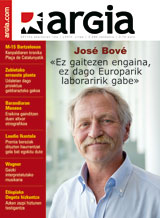

.jpg)
